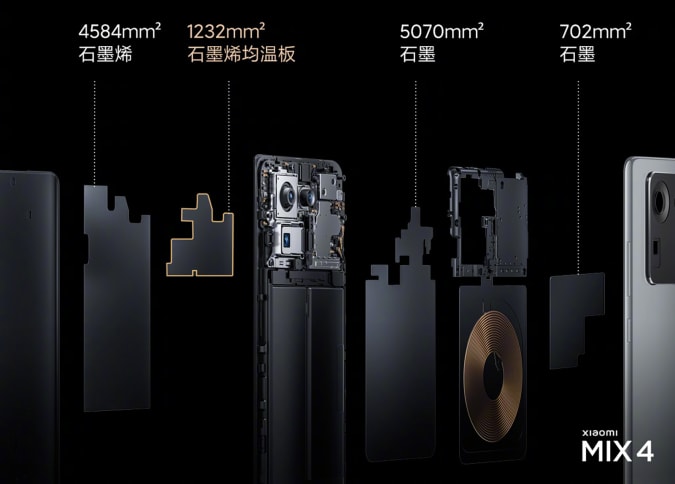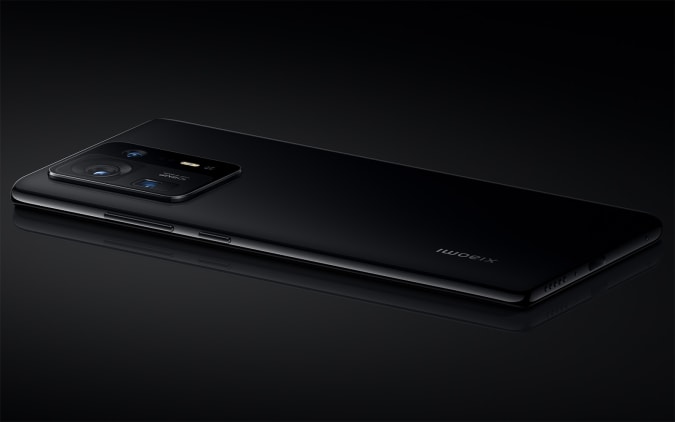Xiaomi’s Mi Mix 4 packs an under-screen camera in a ceramic body
Just days after Oppo unveiled its latest under-screen camera solution, Xiaomi is now launching a new flagship phone with a similar, if not the same, feature. The Mi Mix 4 is the Chinese company’s slimmest ceramic unibody smartphone yet, featuring a 6.67-inch 2,400 x 1,080 screen that stealthily hides a 20-megapixel selfie camera underneath a near-indistinguishable patch of pixels — it’s the same 400ppi density as the rest of the panel, albeit with smaller pixels and transparent circuitry thanks to advancements in AMOLED production.
If the selfie photos on the Mi Mix 4 turn out to be just as good, if not better, than Oppo’s samples from last week, then it’s no surprise that Xiaomi went with this under-screen camera tech. The Mix series has always been about pushing the boundary of form factor design, with the first two models — both designed by Philippe Starck — offering super slim screen bezels along three sides. They were some of the first ceramic smartphones, too.
With the Mi Mix 3, Xiaomi finally got rid of the chin by moving the selfie camera to a slide-up module. I wasn’t a fan of that design, though, as it felt more fragile.
Xiaomi
Now that the under-screen camera is seemingly reaching maturity, it serves as a sensible evolution path to the Mi Mix 4. Still, CEO Lei Jun added that if you really care about your selfies, you should stick to phones with punch-hole cameras; but for him, the under-screen camera is good enough.
The screen itself is otherwise very much the same as what many other recent flagships are offering: 10-bit color, P3 gamut, Dolby Vision, HDR10+, 120Hz refresh rate and 480Hz touch sampling rate. It’s protected by a layer of Gorilla Glass Victus. Like many recent Xiaomi phones, the Mi Mix 4 provides stereo sound tuned by Harman/Kardon, which should go well with that vibrant screen.

Xiaomi
The Mi Mix 4 also happens to be the first smartphone sporting Qualcomm’s latest Snapdragon 888+ 5G processor, taking the clock speed up to 3GHz while being cooled by several layers of graphene and graphite. LPDDR5 RAM options range from 8GB to 12GB, whereas UFS 3.1 storage goes from 128GB to 512GB.
Much like the iPhone 12 series, the Mi Mix 4 also packs UWB (ultra-wide band), but instead of tracking tags, Xiaomi is using this for a feature dubbed “Point to Connect.” Simply point your Mi Mix 4 to a compatible Xiaomi smart device like a TV, smart speaker (like the freshly-announced Xiaomi Sound) or air conditioner, and the relevant app will show up.
The company will also offer a small UWB hub for existing TVs, and this will launch via a beta program in China on August 20th. But if you prefer the old-school way, this Android phone also has an infrared remote feature — as is the case with some Chinese smartphones these days.

Xiaomi
The rear cameras are impressive on paper. There’s a 108-megapixel main camera (HMX sensor with optical stabilization), an 8-megapixel 5x optical zoom camera (with optical stabilization) and a 13-megapixel 120-degree ultra-wide camera (with free-form lens). Still, Lei admitted on stage that he’s saving the better camera components for his main flagship line.
The Mi Mix 4 houses a 4,500mAh which is relatively standard these days, but it supports 120W wired charging, which goes from zero to 100 percent in 21 minutes by default, or in just 15 minutes if you enable “Boost Mode.” There’s also 50W wireless charging, which normally takes 45 minutes for a full charge, or just 28 minutes in “Boost Mode.”

Xiaomi
Xiaomi will be selling the Mi Mix 4 in China starting from August 16th, with colors including white, black and a new gray option. Prices start from 4,999 yuan or around $770 for the 8GB RAM + 128GB storage model, and capping at 6,299 yuan or about $970 for the 12GB RAM + 512GB storage option. We’ll have to stay tuned for international availability, but we’d be surprised if the world’s second largest phone maker doesn’t plan on taking the Mi Mix 4 outside of China.
All products recommended by Engadget are selected by our editorial team, independent of our parent company. Some of our stories include affiliate links. If you buy something through one of these links, we may earn an affiliate commission.
For all the latest Technology News Click Here
For the latest news and updates, follow us on Google News.
